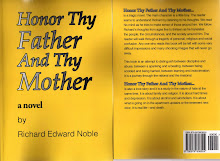Boot and Shoe Makers Journeymen’s Trial of 1806
by Richard E. Noble
The laborer’s condition in the original Colonies was not a happy one. The vast majority of the original settlers were not laborers. Upwards of 80% of the early Colonialists were Artisans, Craftsmen, Merchants, and Farmers. They were the propertied class. The actual laboring class amounted to between 14 and 17 percent of the entire white population.¹ Blacks were for the most part slaves. Two thirds of the white laboring class were contracted or indentured servants. In the Southern colonies this group was virtually indistinguishable from the black slave community. They could be bought, sold, beaten and killed. On the average, one in ten survived their typical seven year contract or indenture in Southern colonies. Immigrants came to the colonies as a result of false advertisements directed towards the gullible and discontented.² These ads proclaimed a better, more prosperous existence in the colonies. Some came in an attempt to escape debt or debtor’s prison, or as a part of early release prison programs. In these times the working classes were, to say the least, not respected in British society. A person, adult or child, could be executed for any one of five hundred different felonies. In the Northern colonies conditions were somewhat better, but not by a great margin.
As we approach the year 1776, and the war of Revolution, things gradually improve for the working class. Laborers, journeymen and apprentices become more and more scarce. In 1774 the British go so far as to enact a law limiting immigration. The industrial revolution is burgeoning and the British need all the unskilled and semi-skilled labor they can find. In the colonies demand for labor is high. Even though in many colonies there are laws limiting wages, they are impossible to enforce. Not only can free laborers move from town to town or from colony to colony, they can also move out into the wilderness; trap, hunt and settle free, “unoccupied” land. All they had to do was beat off the Indians. Which was often easier than beating off their masters, it seems. Consequently at the time of the American Revolution, common laborers, journeymen and apprentices were enjoying a heyday. Wages were 30 to 100 percent higher than in jolly old England.
But the tradition of discontent and worker rebellion goes way back in America. As early as 1636 John Winter, an overseer in Maine, was complaining about workers who struck in illegal consortship. For workers to unite in combination for the purposes of improving wages or working conditions was traditionally illegal.
This notion went all the way back to the English Tudor Industrial Code. Wage and price limitations were the standards of the day. Maximum wages were traditionally set. Prices were not set, but the concept of a “just” price was understood. If a businessman raised his price above what was considered “just” by the community, he could suffer serious repercussions.
Adam Smith’s “Wealth of Nations” wasn’t published until 1776. Supply and demand and the self regulating market were not the rule of the day. In the year 1644, in Boston, Massachusetts, Robert Kaeyne was undergoing a trial for avarice. He had made over sixpence profit on the shilling. This was shameful. Other things that were considered shameful at the time: that a man might sell as dear as he can, and buy as cheap as he can; that if a man lose by casualty of sea etc., in some of his commodities, he may raise the price of the rest; that he may sell as he bought, though he paid too dear.
A merchant who sold his product over what the community considered a “just” price could have his business ransacked; or could be tarred and feathered and run out of town. Business was regulated by tradition and authority. The rules of price and wage were set by law, social custom and community morality, not the Laws of Supply and Demand. The first piece of legislation passed in the Massachusetts Bay Colony was that skilled workers would not be paid more than two shillings per day.
In 1741, New York City Bakers struck and were prosecuted for a criminal conspiracy, but no action was taken. In 1746 House Carpenters went on strike in Savannah, Georgia. In England, they were tried, condemned and fined, but here in the colonies, no action was taken. Finally in 1806 in Philadelphia a group of journeymen boot and shoe makers were tried for joining together in a conspiracy and acting in an illegal manner in the restraint of the trade of their employers. They were found guilty of forming a combination to raise their wages. They were fined eight dollars each and court costs. They were to be held in jail until their debt was paid.
This decision by the courts was basically the law of the land until 1842 when a Massachusetts court reinterpreted the doctrine of criminal conspiracy. Chief Justice Shaw in the case of Commonwealth v. Hunt defined a conspiracy as a combination of two or more persons acting in a concerted action to accomplish some criminal or unlawful purpose, or to accomplish some purpose not in itself criminal or unlawful, by criminal or unlawful means. As applied to workers, this meant that workers activities are criminal if their aims are illegal or if the methods that they use to attain their purposes are illegal.
The General Law on collective action is a part of the common law and contains two main principles; the doctrine of conspiracy and the doctrine of restraint of trade. The conspiracy doctrine or law of combinations stems from a statute passed by the English Parliament about 1350. The Black Death had greatly reduced the size of the British working population. As a consequence, the wages of working folks went up. The first statute that was passed demanded that wages be “just” and not excessive. Then in 1800 an Anti-Combination Act was passed making it a criminal offense for laborers to combine together for the purpose of raising their wages or improving their working conditions. As stated above this was the law until 1842. None of this proved to be very helpful. Although employer’s rights were established, what rights workers had was still to be determined.
Unions and labor organizations had the right to join together for fraternal or benevolent purposes. They could accept or reject the wage offerings of their employers. If they rejected the wage offered, they could quit, find another job, or pack up and head West. Up until 1842 anything in excess of these options was illegal. They interfered with the constitutional rights of the employer, his property rights, or his right to conduct business.
1 “A History of American Labor”, Joseph G. Rayback.
2 Ibid
3“The Worldly Philosophers”, Robert L. Heilbroner.
4“Labor Problems in American Industry”, Carroll R. Dougherty.
5 used in this essay include; “The Worldly Philosophers”, Robert L. Heilbroner; “Labor Problems in American Industry”, Carroll R. Dougherty; “The History of American Labor”, Joseph G. Rayback: “The Annals of America Vol. 4, 1797-1820; Tom Paine and Revolutionary America”, Eric Foner; “The Story of American Freedom”, Eric Foner.
Subscribe to:
Post Comments (Atom)







































No comments:
Post a Comment